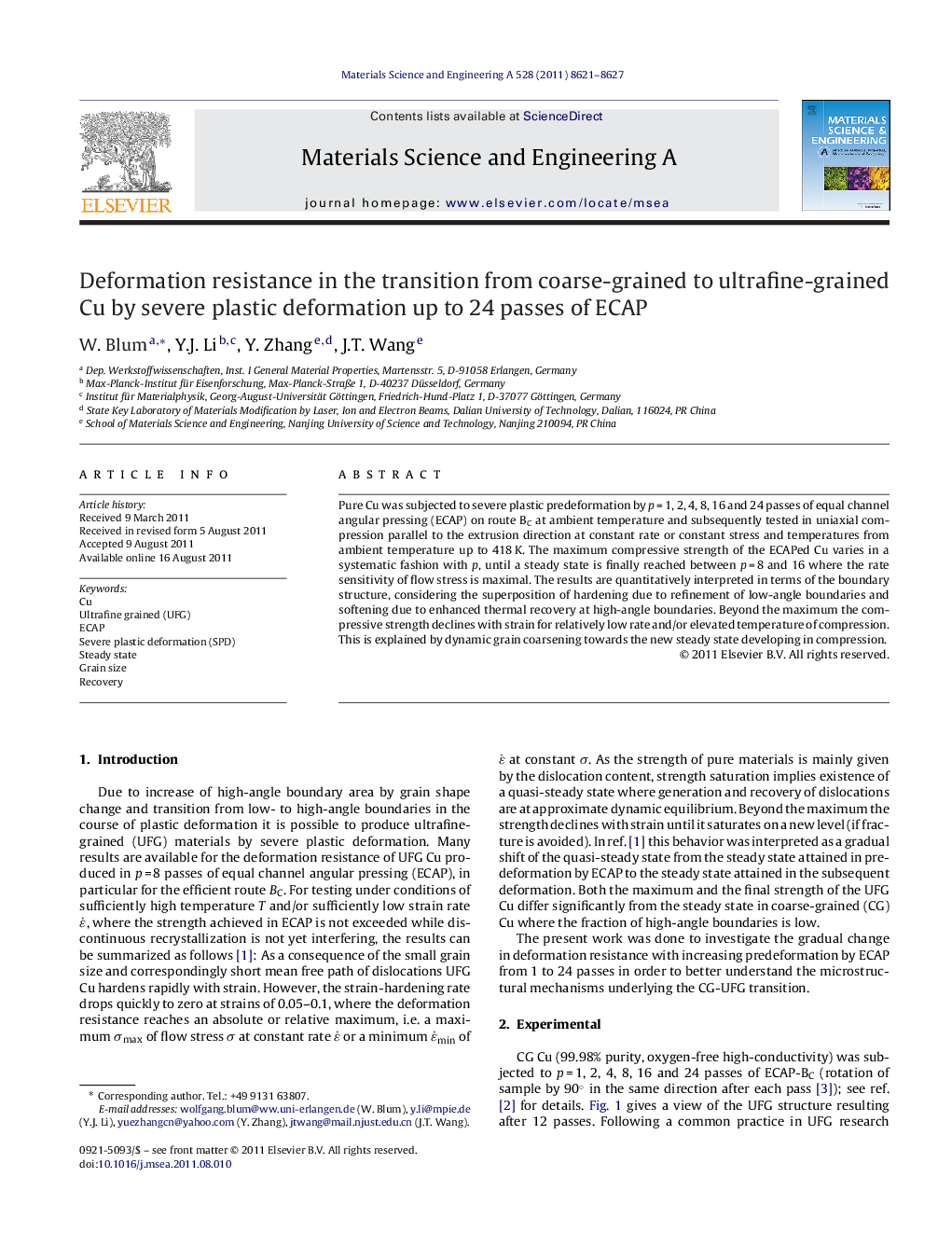| کد مقاله | کد نشریه | سال انتشار | مقاله انگلیسی | نسخه تمام متن |
|---|---|---|---|---|
| 1578091 | 1514815 | 2011 | 7 صفحه PDF | دانلود رایگان |

Pure Cu was subjected to severe plastic predeformation by p = 1, 2, 4, 8, 16 and 24 passes of equal channel angular pressing (ECAP) on route BC at ambient temperature and subsequently tested in uniaxial compression parallel to the extrusion direction at constant rate or constant stress and temperatures from ambient temperature up to 418 K. The maximum compressive strength of the ECAPed Cu varies in a systematic fashion with p, until a steady state is finally reached between p = 8 and 16 where the rate sensitivity of flow stress is maximal. The results are quantitatively interpreted in terms of the boundary structure, considering the superposition of hardening due to refinement of low-angle boundaries and softening due to enhanced thermal recovery at high-angle boundaries. Beyond the maximum the compressive strength declines with strain for relatively low rate and/or elevated temperature of compression. This is explained by dynamic grain coarsening towards the new steady state developing in compression.
► Quantification of strength in the temperature-normalized rate-stress field.
► Continuous transition from CG to UFG behavior with ECAP passes.
► Modeling of strength evolution based on dislocation recovery at boundaries.
► Dynamic grain coarsening.
Journal: Materials Science and Engineering: A - Volume 528, Issues 29–30, 15 November 2011, Pages 8621–8627